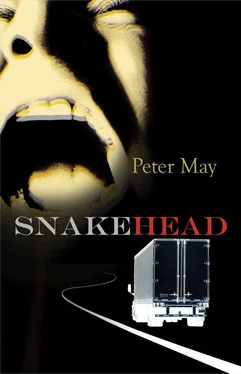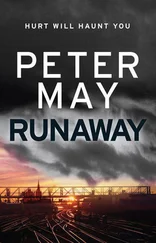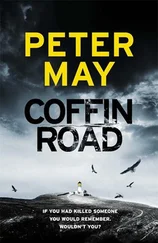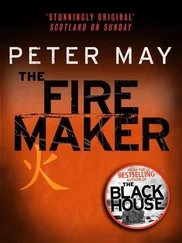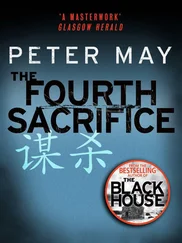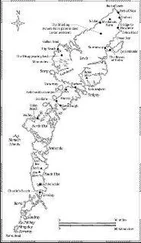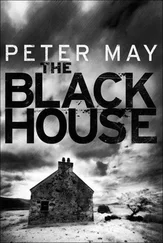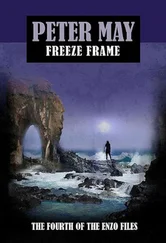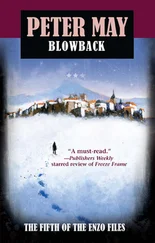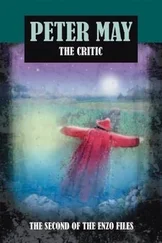‘Then there is anthrax. Wonderful mortality rate. Up to 90 percent if untreated in the first two days. Horrible way to die. The bacteria takes over your lymphatic system before entering the blood and producing toxins that attack your organs. Your skin turns blue and your lungs fill with fluid and you drown. We knew just how effective it was when we had our own little biological Chernobyl at Sverdlosk. Spores were released accidentally from our plant there and killed most of the night shift at a ceramics factory across the road. Given the right atmospheric conditions, the release of a hundred kilos of spores in any big US city would kill around three million people. We were developing a strain of anthrax that could be deployed in an SS-18 missile. A single one of which would have wiped out the population of New York City. At Stepnogorsk, we were producing two tons of anthrax a day.’
Some of those around the table had undoubtedly heard this before. But it was news to Margaret. She sat in stunned and horrified silence as Markin continued to catalogue the monstrous affront to civilised behaviour that had been perpetrated by the former Soviet Union with its hugely funded biowarfare programme. He appeared to draw succour from their disapproval.
‘Of course, smallpox and anthrax were not the only concoctions we were preparing for the arming of the SS-18s. There was plague, the bubonic variety of which killed a quarter of the population of Europe in the Middle Ages. And then there was Marburg, a rare filovirus that acts in much the same way as Ebola. And all that,’ he added, ‘when you Americans were hailing Mikhail Gorbachev as the great reformer, the man who would draw the world back from the brink of super-power confrontation. Well, I’ll let you into a little secret. In terms of biowarfare, there was only one super power. And that was the Soviet Union.’ He grinned, the whole superiority of his tone condensed in his next words. ‘And you know what? You people didn’t even know it.’
He stood up, as if his seat had suddenly become very hot. ‘I’m telling you this because you need to know that we knew what we were doing. We spent billions on research, built massive plants capable of bacterial and viral weapons production on the grand scale. We had thousands of scientists and researchers working full-time on ways to destroy the population of the West with infective agents.’ He took his time looking around the table, meeting the eyes that were all turned toward him. ‘And then suddenly it was over. The Soviet Union was no more. The money stopped, the programme was pulled, weapons stocks destroyed.’ He shrugged extravagantly. ‘They have a limited life anyway. A use-by date, just like you’d find in the supermarket.’ He drew a deep crackling breath. ‘But the know-how didn’t go away. What do you think happened to all these thousands of scientists when the government stopped paying them?’ He stabbed a finger into his own chest. ‘Like me, they went to work for the highest bidder.’ His eyes were alight now. ‘But unlike me, they didn’t all go to work for the good guys.’ And he sat down again just as suddenly.
‘My friends, we have scattered the seeds of our own destruction to the four corners of the earth. Many of my former colleagues, I believe, now work for the new republics. Others are in the employ of the Russian Mafia. Yet more went abroad. To Iraq — Saddam paid well — and to other Arab countries. To India and Pakistan. Some are working for multinationals, others for entrepreneurs. I have heard that Arab terrorists would pay handsomely for some of that know-how. And who knows who else is out there itching to spend money on killing Americans with the superbugs we created.’
‘Jesus Christ!’ Hrycyk muttered under his breath. ‘Jesus fucking Christ!’
Margaret looked at her hands. They were trembling. The picture Markin was painting of a world filled with abominable viral and bacterial creations, and a whole community of educated and intelligent people only too happy to unleash them, was as grotesque as he was himself.
Markin knew very well the effect he was having. A slow grin spread itself across his face as he took in their expressions.
The same question Margaret had asked earlier occurred to her again. ‘Why?’ she said.
Markin looked at her, perplexed. ‘Why what?’
‘Why did you do it? Break the Convention? Spend all those billions on creating biological weapons of mass destruction?’
Markin held out his hands, palms up, as if it were the most obvious thing in the world. ‘Because we thought you were doing it, too,’ he said.
‘And we weren’t?’ Hrycyk asked.
Markin sighed. ‘Apparently not.’ He smiled. ‘I know — difficult to believe, isn’t it? We thought so, too.’ He shrugged again. ‘Although I doubt, as you people would claim, that it had anything to do with your moral superiority. More likely the fact that it would have been impossible for your government to spend the billions of dollars required without anyone knowing about it. The difference, I suppose, between democracy and totalitarianism. We could get away with it, you couldn’t. But I digress.’ And he leaned forward, tightly focused now. ‘The point is that the kind of gene technology that was employed on these Chinese immigrants is not the preserve of a handful of scientists at the cutting edge of their discipline. Any number of my former colleagues would have been capable of performing the kind of manipulation required. But not all of them would have been smart enough. Because make no mistake, what we are looking at here is a very clever piece of work. This has not been cobbled together by some half-baked terrorist. It is the work of a polished professional employing the kind of perverse logic we can only stand back and admire.’
Fuller spoke for the first time. ‘I can’t say I find much to admire in it, Mr. Markin.’ Margaret glanced at him. He looked grim.
‘Ah, but you must always respect your enemy,’ Markin said. ‘Admire him, even. Never underestimate him. In this particular instance, we are dealing with a mind of great ingenuity. Even the use of the Spanish flu virus is ingenious. Because there is no vaccine against it.’
‘So how did these people manage to get hold of the virus,’ Margaret asked, ‘if there were never any preserved live cultures?’
Markin was dismissive. ‘Oh, there have been several attempts to recover soft tissue and culture the live virus. There was one expedition to dig a bunch of miners out of the permafrost in Norway. Soft tissue was also recovered from the crew of a submarine trapped under the Arctic ice pack during the pandemic in 1918.’ He nodded toward the AFIP contingent. ‘Yet more found in an Eskimo grave in Alaska.’ He rubbed his jaw, and skin showered on to the table like snowfall. ‘Of course, none of them was able to culture live virus.’
‘Why would they want to?’ This from Hrycyk.
‘You have to understand, sir,’ Markin said, ‘that we know virtually nothing about why the 1918 flu was so virulent and so deadly. And many doctors believe that it is only a matter of time before a similar pandemic strikes again, that we are in fact merely in an interpandemic period. For medical science to be able to study the Spanish flu virus and to know what made it such a killer would go a long way to enabling us to protect ourselves against a future attack.’
‘But you haven’t answered the question,’ Margaret persisted. ‘If no one has been able to culture the live virus, where did it come from?’
Markin waved his hand dismissively. ‘Easy,’ he said. ‘You don’t need live virus. If you can retrieve a reasonably intact sample of the viral RNA from soft tissue, you can transcribe it to DNA. Amplify the DNA by adding it to genes in a bacteria called plasmids, then inject the plasmids into human or monkey cell cultures and bingo, you produce live virus. Effectively, you have cloned an identical replica of the original.’
Читать дальше
